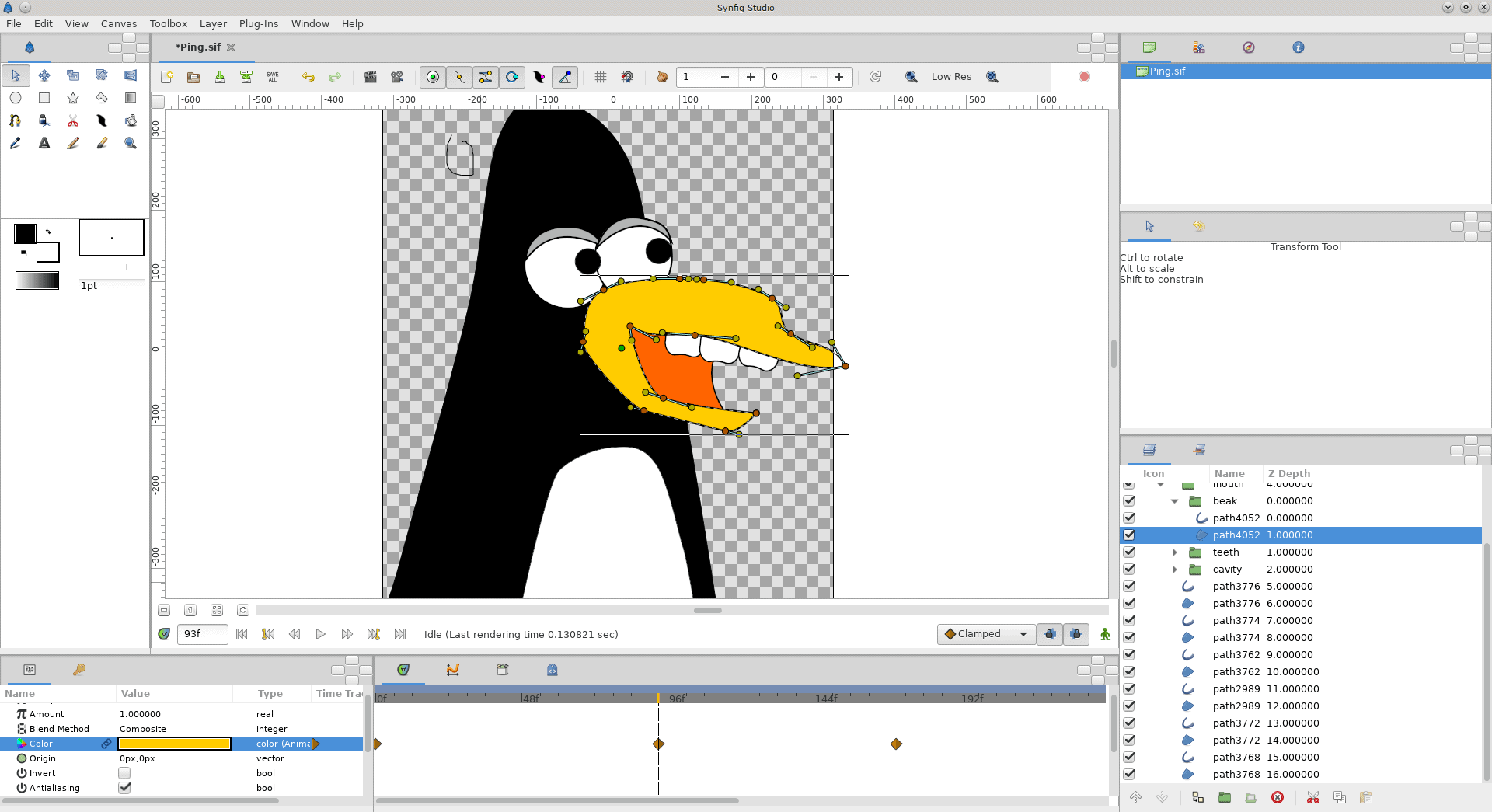
The concept of scope as just demonstrated sets Synfig apart from other programs with layer hierarchies.

If only for the additional organization, grouping layers dramatically improves the ease of use of Synfig Studio. You will found more informations about the various 'Blend Method' in the Blend Method documentation. The gradient is restricted to the rectangle. Congratulations! You just made your first effect by interacting layers with Synfig. The gradient should now be restricted to the rectangle. Double-click the entry and select Onto from the drop-down menu. Now go to the Parameters Panel (by default it resides in the bottom window), and search for the attribute called Blend Method. To do so, activate the gradient layer in the Layers Panel. However, there is still a problem: the gradient still covers the whole canvas although we wanted it to be restricted on the rectangle. Synfig Studio Animation Images Using locality You can do this for ANY layer, and are strongly encouraged to do so. If you want to change the name of it to something more descriptive, just select the layer in the layer tab and click on its label. You can treat this layer like any other layer - move it around, duplicate it, copy and paste it. By clicking on the ▶ you can expand the group layer to see its contents, your previous two layers: the gradient and the rectangle. The view of your Layers Panel should change now, showing a small box called Group with a ▶ in front.

Then, right-click and select 'Group Layer' from the menu. In the Layers Panel, select both the gradient and the rectangle layer. The goal was to have a gradient in the rectangle. You now have a gradient, but it is not what you wanted: it spreads across the whole canvas. If you see a spiral gradient, go to the Tool_Options_Panel and change Layer Type to linear by clicking on the far left icon. You should note that another layer was added in the Layers Panel called Gradient. Pick the Gradient Tool from the Toolbox (Composite Blend Method), press the left mouse button on the canvas, drag to change the gradient direction and release the button when you are done. Next, create a simple rectangle with the Rectangle Tool. There's no need to bother with a timeline at this point. So let's look at a simple example of how we can combine two layers to create a gradient effect on a rectangle.Ĭreate a new file with any duration. Understanding the concept of layers is an important part in understanding how Synfig works. Those are called filter layers or effect layers.Īs you will see, layers are an extremely important aspect of Synfig, much more so than most graphics programs.

Creating an animation in Synfig Studio is really easy. Synfig can render to video formats such as AVI, Theora and MPEG, as well as animated graphics formats such as MNG and GIF. Synfig Studio is available for Windows, Linux and MacOSX. Synfig Studio eliminates the need to create animation frame-by frame, allowing you to produce 2D animation of a higher quality with fewer people and resources. Do you want to create your own animated movie, or just animated postcard, or animation for a game? Synfig can do that for you!
#SYNFIG STUDIO ANIMATIONS FREE#
Synfig Studio is a free and open-source application available for Windows, Linux and Mac OSX.
#SYNFIG STUDIO ANIMATIONS HOW TO#
In this course you will learn how to create 2D animation using Synfig Studio animation software package. It eliminates the need to create animation frame-by frame, allowing you to produce 2D animation of a higher quality with fewer people and resources. Synfig Studio is a free and open-source 2D animation software, designed as powerful industrial-strength solution for creating film-quality animation using a vector and bitmap artwork.


 0 kommentar(er)
0 kommentar(er)
